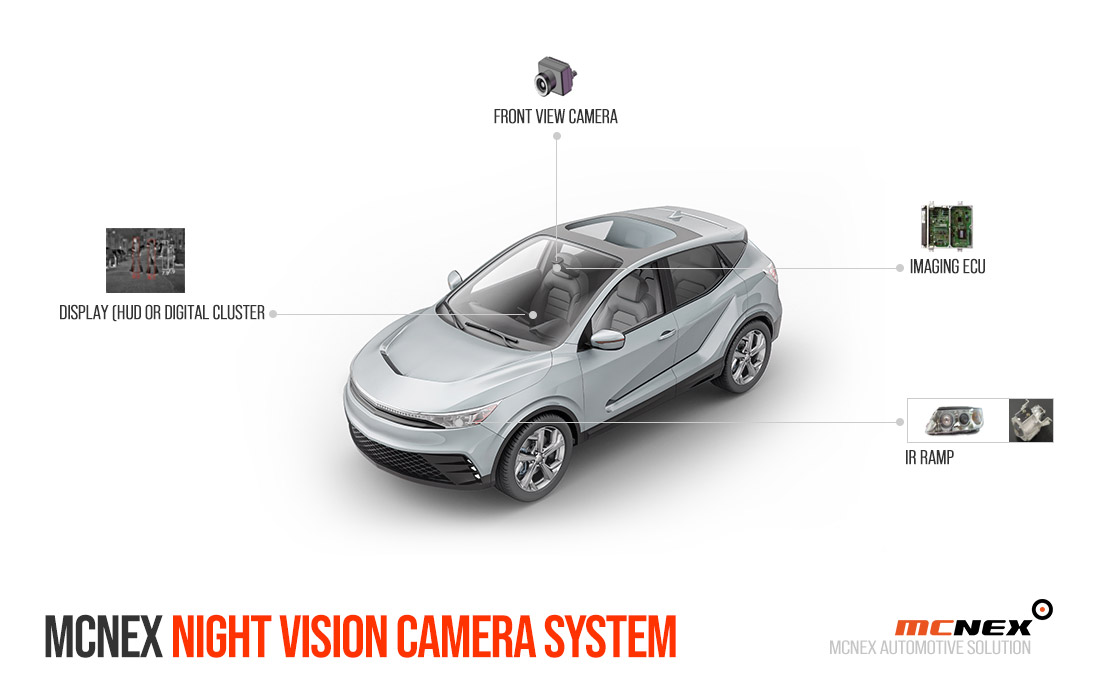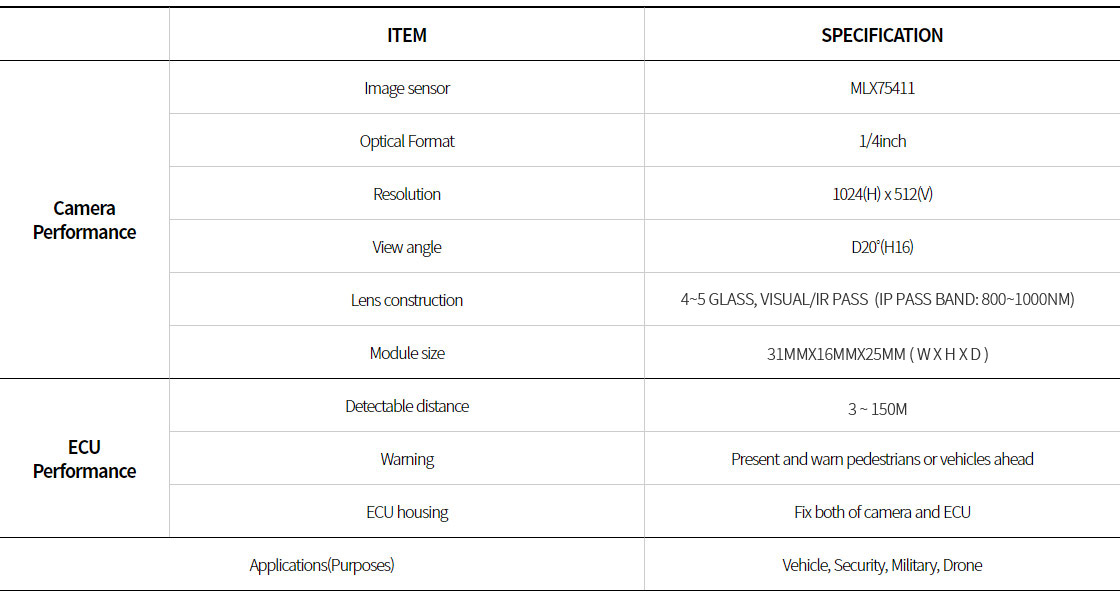NEWSROOM
Here we share with you various MCNEX stories.
- Title‘Night vision camera’, a key technology in the autonomous driving era DATE 2024-05-26
-
‘Night vision camera’ for autonomous vehicles
One of the key elements of autonomous vehicle technology is sensor technology that allows vehicles to operate safely in a variety of environments and conditions. Night vision cameras provide visual information that exceeds the driver's field of vision in low-light environments, allowing drivers to detect dangerous situations, and improve night driving safety by detecting objects 3-5 times farther away than headlights when driving at night. It is one of the important technologies in autonomous driving systems.
MCNEX night vision cameras are sensors that can clearly capture images in low-light conditions. This technology uses primarily infrared (IR) illumination to accurately recognize objects and obstacles and predict hazards in dark environments, greatly improving safety and providing accurate information about the surrounding environment, enabling autonomous systems to make faster and more accurate decisions.


MCNEX ‘Night Vision Camera System’
Infrared (IR) lighting
The heart of a night vision system is infrared lighting. Infrared is a form of light that is invisible to the human eye but can be detected by special cameras. Night vision cameras utilize infrared light to create images in dark environments, which illuminates the surrounding environment and the reflected light is captured by the camera.
High sensitivity sensor
Night vision cameras are equipped with highly sensitive sensors, allowing them to detect light even in very low light levels. This sensor converts light reflected by infrared lighting into signals, creating clear images even in dark environments.
Sensor integration and data fusion
Night vision technology works synergistically through integration with other sensor technologies such as LiDAR, radar, GPS, and other visual camera systems. This integration is achieved through sensor fusion technology, which greatly improves the accuracy and reliability of the information obtained by the vehicle, and by combining various data sources, autonomous driving systems can achieve more comprehensive environmental awareness and more sophisticated decision-making.

The technical importance of night vision technology is related to the superior environmental awareness capabilities it contributes to the sensor systems of autonomous vehicles. This technology is essential to enable vehicles to operate safely in dark environments, and its importance is demonstrated by the following key technical aspects.
Improved safety in low light conditions
Night vision technology allows the vehicle to sense its surroundings even in dark environments. It uses infrared (IR) lighting and highly sensitive sensors to provide environmental awareness beyond the human visual range, allowing roads, pedestrians, animals, and other obstacles to be clearly identified even in the dark, greatly reducing the risk of accidents when driving at night. This makes night driving of self-driving cars safer.
Precise object recognition and classification
Through image processing algorithms, night vision cameras can precisely recognize and classify objects in captured images. It is continuously improved using machine learning and deep learning technologies, allowing vehicles to more accurately understand different objects and situations. As a result, autonomous driving systems can make faster and more accurate decisions and ensure the safety of drivers and road users. Additionally, by combining night vision cameras with other sensor systems, vehicles can identify and classify objects more accurately even under a variety of conditions. For example, lidar is excellent for accurately measuring distance and shape, while night vision cameras are better at capturing details in low-light conditions.
Adaptation and flexibility to complex operating conditions
Night vision cameras help vehicles maintain a high level of autonomy even in complex and unpredictable operating environments. For example, it is very helpful in detecting situations where wild animals run into the road or obstacles on the road. It also allows autonomous vehicles to more flexibly adapt to various environments and situations, and allows the vehicle's sensor systems to perform optimally even under extreme weather conditions such as strong sunlight or fog.
Advances in night vision technology will continue to improve the performance and safety of autonomous vehicles. Thanks to advances in machine learning and artificial intelligence technologies, night vision systems will be able to recognize and analyze their surroundings more accurately and quickly. These technological advances enable autonomous vehicles to deliver safe driving performance.
Furthermore, improvements in night vision technology will contribute to expanding the scope of application of autonomous driving technology. For example, more advanced night vision systems could explore potential applications in areas such as emergency rescue operations, exploration of remote areas, and night surveillance. It is expected that night vision technology will be able to play an important technological role not only in supporting safe driving of autonomous vehicles, but also in various fields of society.